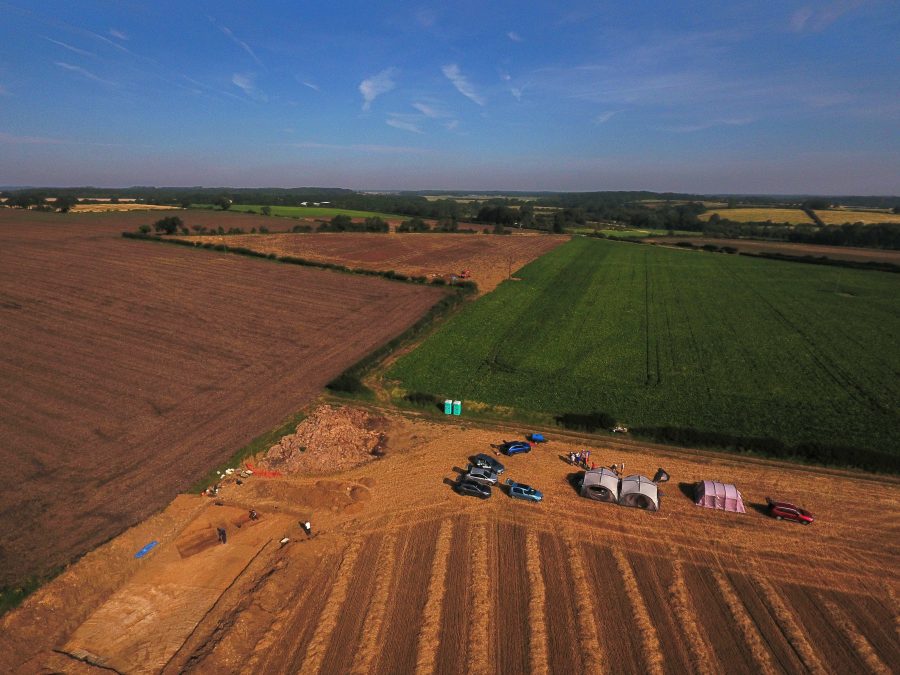We are back in sunny Nassington for the fourth year with our friends from MidNAG. This year we are continuing our quest to understand the features revealed by geophysics and aerial photography. Fewer specific features (or finds) but plenty of ditches!
And plenty of dogs. Here is a skull being lifted by one of our younger archaeologists, Maisie – aided by bones specialist, Josh.
And another one with skeleton largely undisturbed.
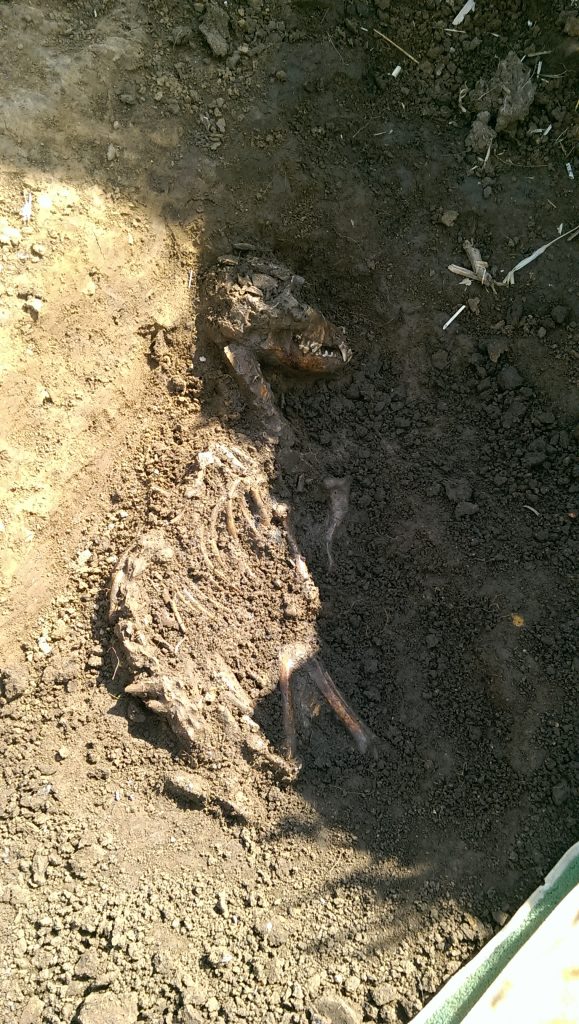
Two of the more striking objects found this year are a barbed and tanged flint arrowhead, and what may be the head of a Roman stylus.
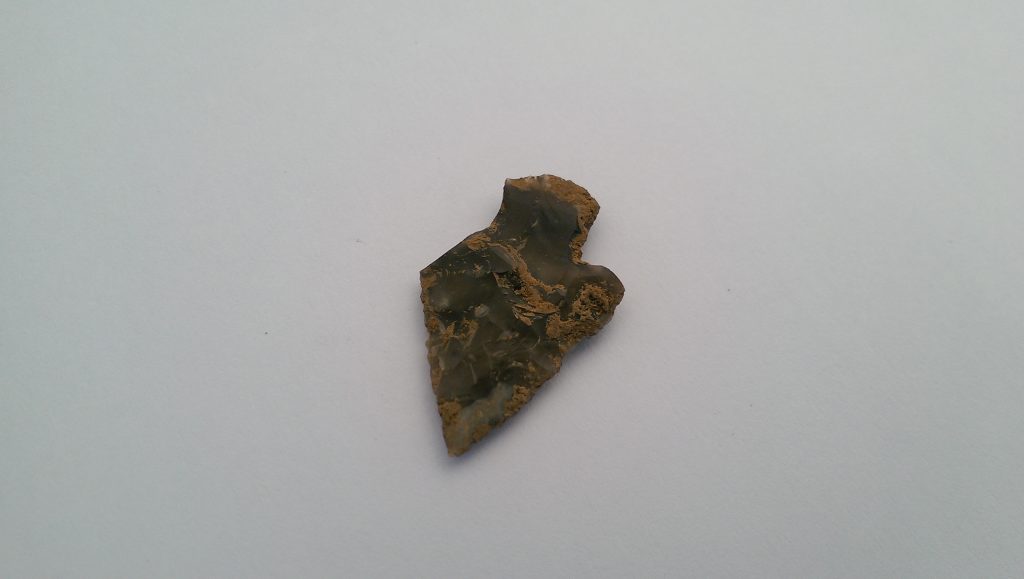
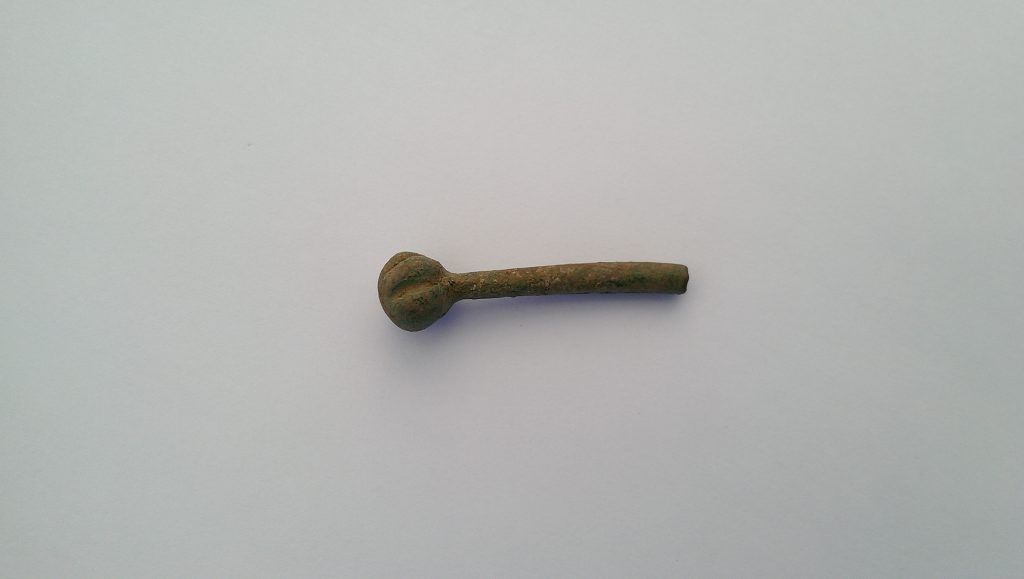
Trench 21 is positioned to intersect what is expected to be a Roman enclosure ditch. A few days of excavation and we have a clear cut through blue-grey clay.
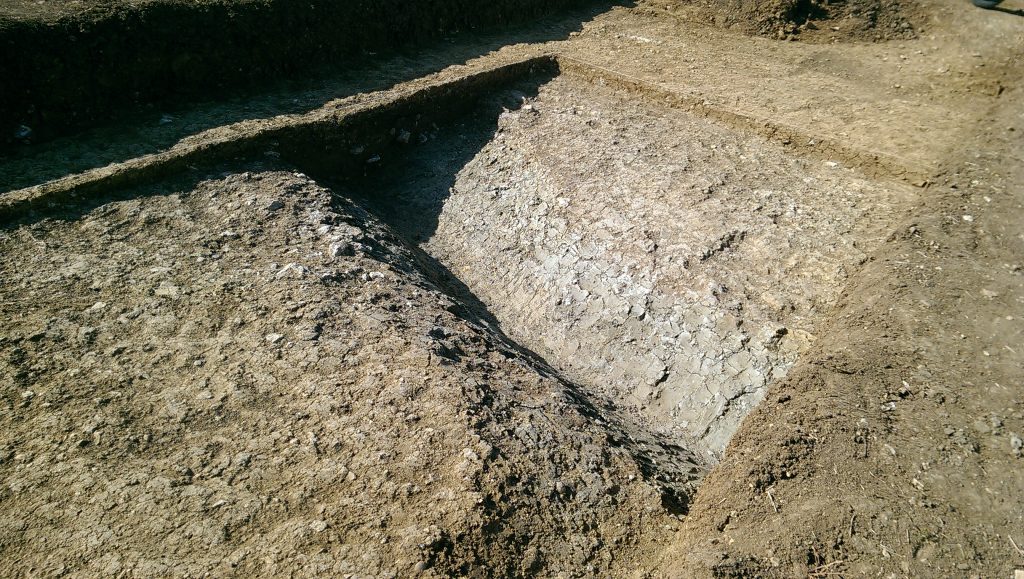
In the largest trench (15) linear features evident when the ground is damp soon prove challenging to follow in full sun.
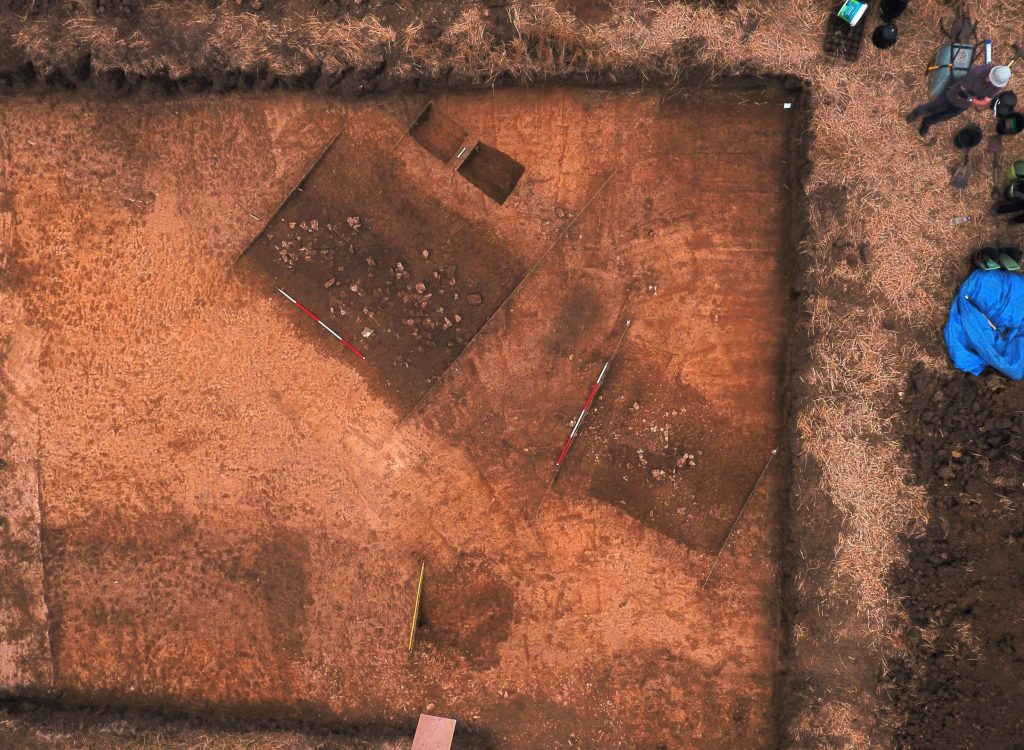
With stones removed two teams spent a very hot Monday probing the depth of this significant ditch, under the watchful eye of director of archaeology, Derek.
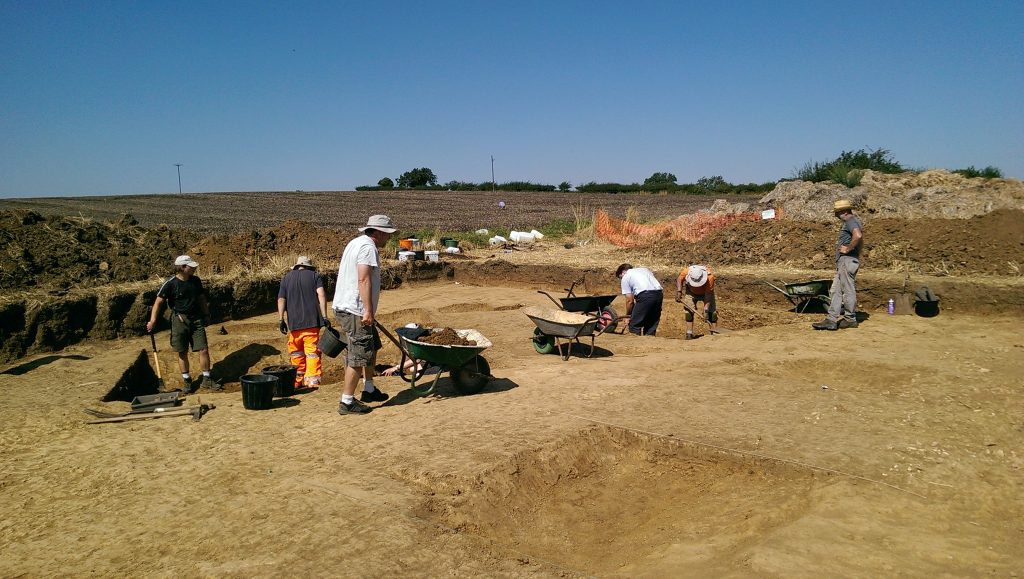
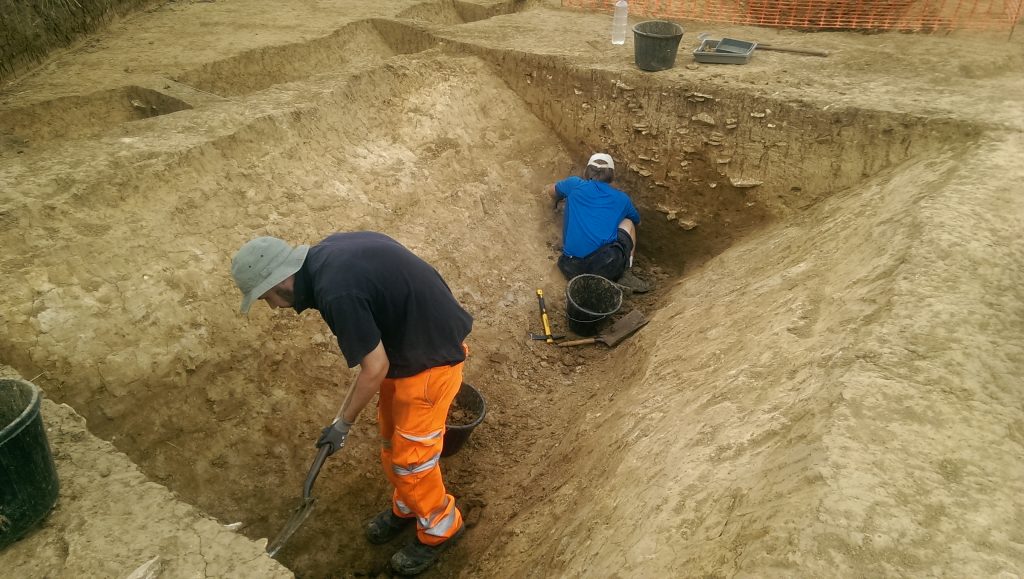
Trenches 16 – 21 are spread over the field immediately to the north of the Roman barn excavated in previous years.
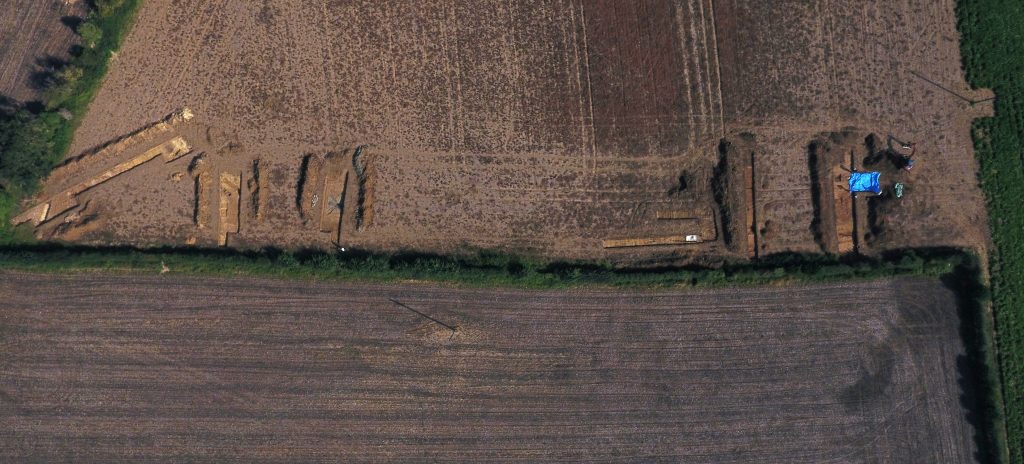
In Trench 20 we have unearthed a further section of an Iron Age track-way cut through the natural stone.
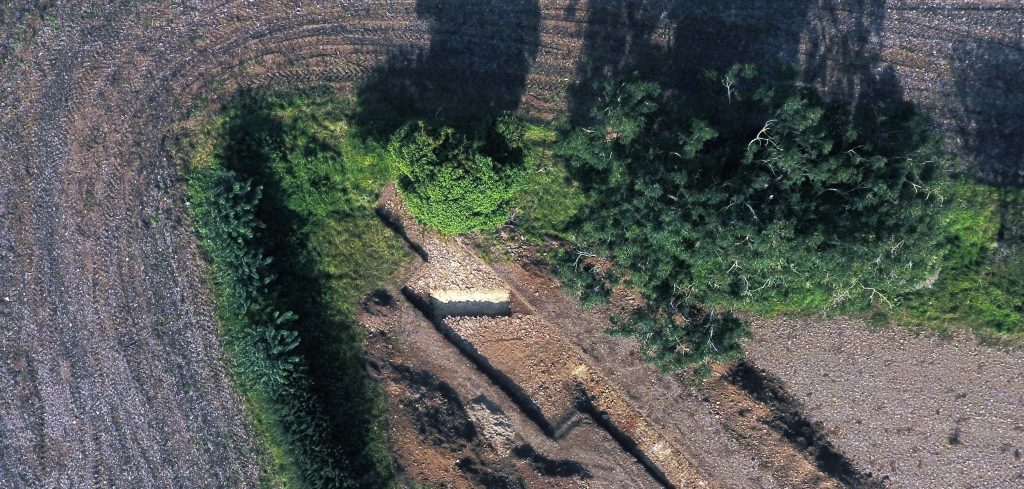
Within Trench 18 during the final days of the dig we mattocked through 2m of clayey fill to bottom an Iron Age ditch. Right at the top Andy lifted a beautiful Roman brooch, then moments later another post medieval example found with a metal detector nearby. Thereafter, little encouragement by way of finds but right at the base we found charcoal and tiny pot fragments.
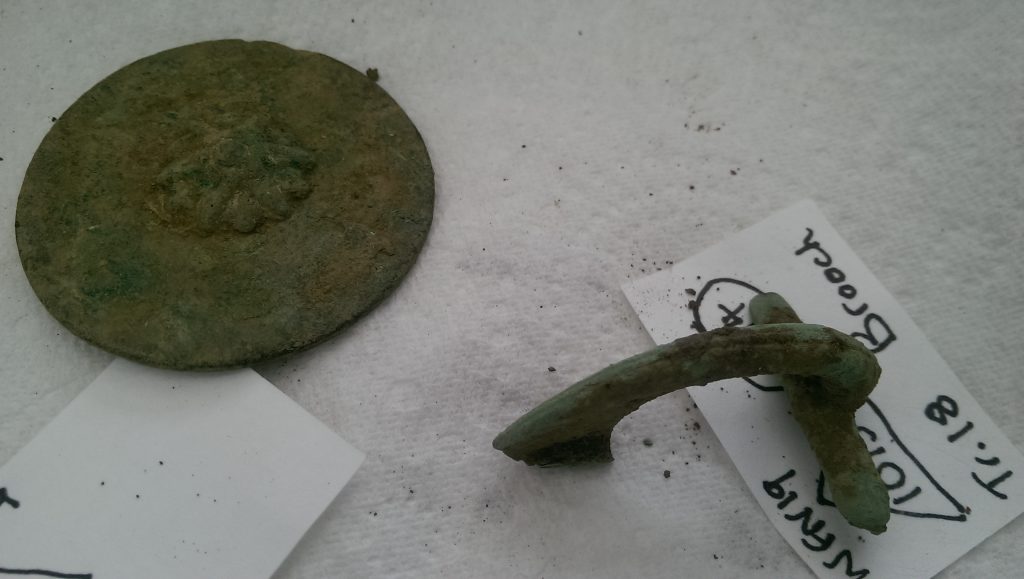
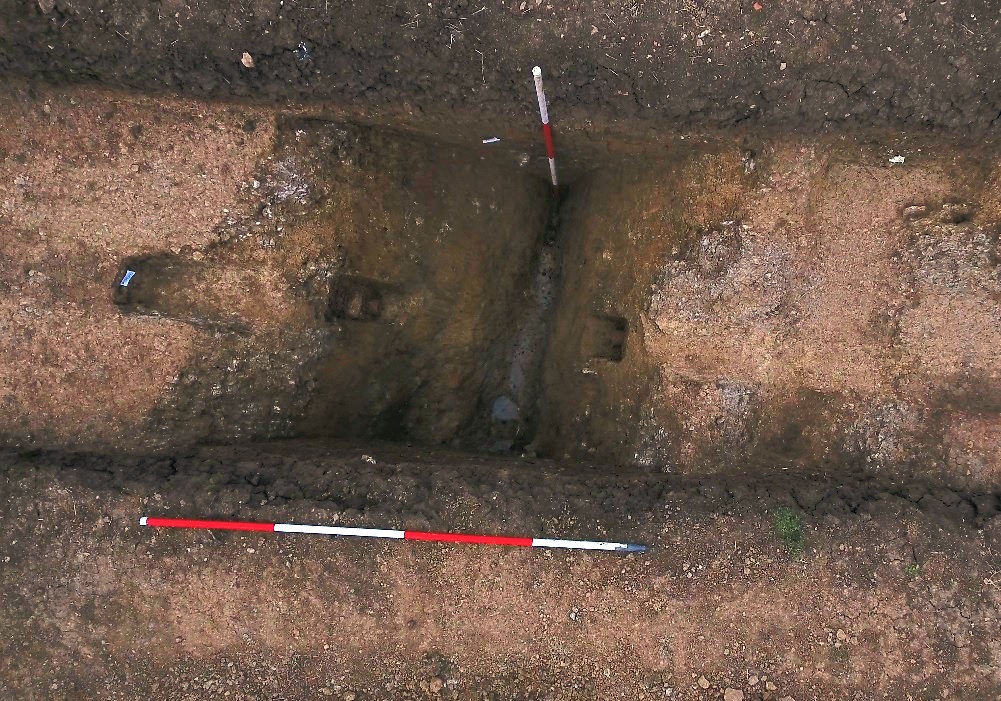
With section plans drawn, rain in the air and August coming to a close, attention switched to dismantling tents and back-filling. We will return!
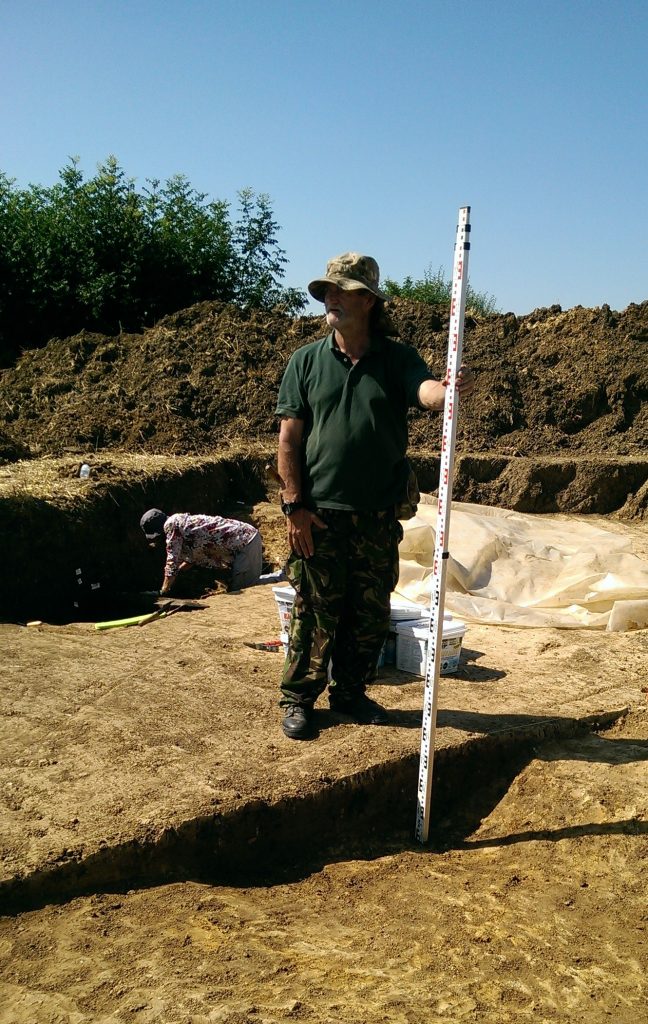
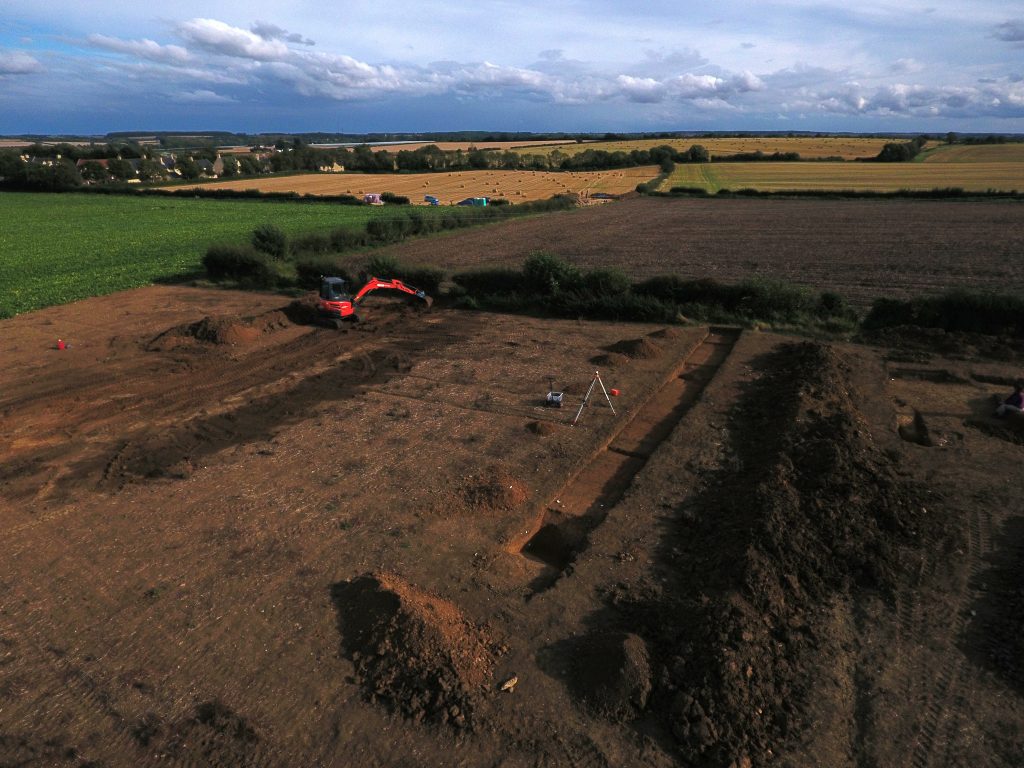
The dig is organised by Oundle based group MidNAG.
During previous digs we revealed a large Roman barn and multiple corn dryers. This farmstead formed part of a busy rural landscape for hundreds of years.

